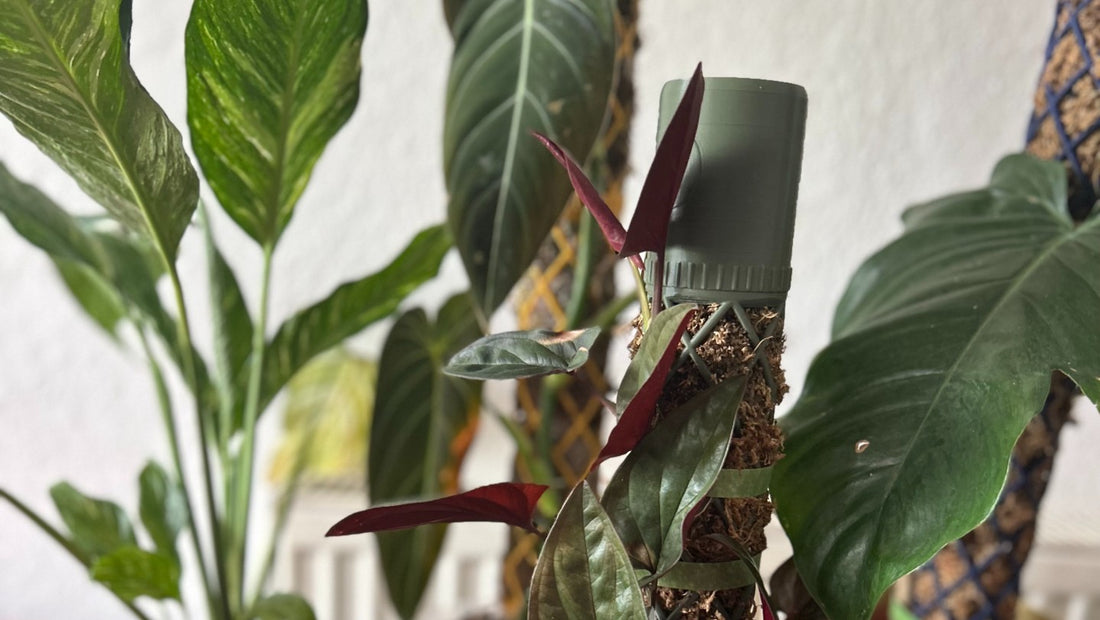
How to hydrate your moss pole
Share
How you hydrate your moss pole depends greatly on what kind of pole you are using!
We've gone into depth about the different types of moss poles further back in our blog, but if you need a refresher, check here.

You might know by know that keeping a moss pole wet during the hot months can be challenging, and you need to be prepared to top up your poles with water on a regular basis.
Self-watering moss poles explained
What makes a moss pole self-watering? Though a lot of poles are touted as self-watering, it's a term that can be misleading.
In an ideal world, a self-watering moss pole should draw water from a container to keep itself at the correct level of moisture for an extended period of time, allowing for lower maintenance and care. It should also only draw the necessary amount, and if it draws too much water, there should be a way for the excess water to leave the moss pole without entering the substrate, potentially drowning the roots in the pot.
This means that a set-and-forget system can be potentially quite harmful, as the rate of drying of moss depends quite heavily on the environmental conditions which even in an indoor environment can be quite changeable (a plant sat by a window on a sunny day vs a cloudy or even rainy day).
Some solutions tout a complex system of pump and transfer tubes, measurements of water, and programs you can schedule down to the minute. These systems are quite pricey, but could save you quite a lot of effort if you are able to get them properly working.
Any type of hydration system is heavily dependant on the moisture holding medium, and in practise we have found they work best with natural substrates like sphagnum moss, which is why we have designed our moss poles to hold this wonderful organism.

As these complex systems are not always accessible or practical, we have worked hard to solve the issue of hydrating moss poles through alternate methods, and will talk more about our solutions in a minute.
Misting, showering, and soaking
If you've used a coir pole in the past, you have probably noticed that it does not retain very much water, and that the best way to rehydrate it after it has been left to dry is to fully submerge and soak the "moss" pole. This is impractical as you must either remove the pole completely, disturbing your plant, or you must carefully submerge the pole while still attached to the plant.
An alternative for a full soak is to take your plant and pole into the shower, and on a fine misting setting for your shower head (highly recommend getting a good one) with lukewarm water, you can hose down your pole and plant. This method has a few downsides: having to move plants around, mess generated, you water the plant at the same time (whether it needs it or not).
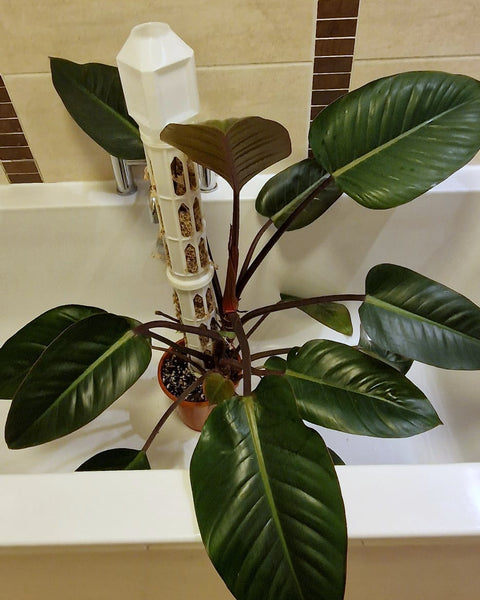
Many people thus prefer misting over a full shower, which can be done with a spray bottle, at the expense of your time and muscles. An upgraded method is to use a pump mister, such as those for spreading pesticides. Take it a step further and buy an electric mister, which is battery powered and quite adjustable.
Water wicking
Sphagnum moss is a tissue-like living organism that can hold up to 20 times its mass in water, acting like a sponge by soaking up any water it comes in contact with, and spreading it along its whole volume until it reaches saturation.
This characteristic can be leveraged together with a cotton rope wick that can pull water from a container via capillary action. This means that moisture is drawn upwards due to surface tension and the interaction of adhesive and cohesive forces.
As pictured, the rope acts to transfer the water at a rate limited by the saturation of the moss, and the distance of the container. While you can wick upwards against gravity, this method works best and fastest if the container is higher than the connection point in the moss, and the rope does not sag.
This keeps them surprisingly hydrated, though if you have a very long moss pole with a lot of moss, you'll find you need several ropes to provide water at the rate required by the moss pole.
Our watering solutions
Our initial tests led us to design the spiral distribution aid, which spread the water along the top section of the moss pole rapidly. This method works best while the sphagnum moss is still somewhat humid, as once it has dried out completely it will become very hydrophobic, and any water you add quickly will just pour right off into the pot.

This is not a universal solution, however, as your frequency of watering might not be enough to prevent some drying out of the moss, and the water will flow through the spiral too quickly for the moss to absorb; it will just flow into the substrate. You may also have intentionally allowed your moss to dry, an effective method for controlling fungus gnats.
This led us to design the SlowDrip cap, which is a very simple solution to the hydrophobia problem. This little cannister fits into the top section of your moss pole, and will hold enough water to rehydrate your moss pole. Thanks to a tiny hole at the bottom of the cannister, water will slowly drip out onto the moss below, hydrating even the driest of moss.
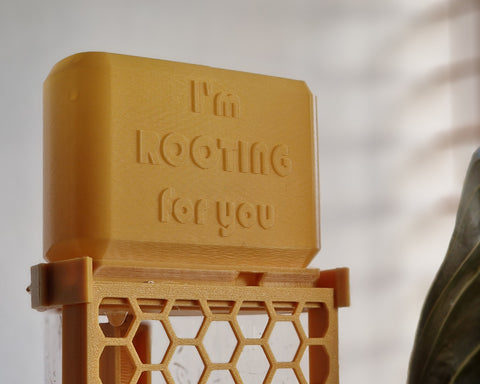
This incredibly flexible system has been engineered to adapt to your moss pole, be it the L, XL, XXL, D, or even your own DIY moss pole! This cap comes with a little specialized pin for cleaning the holes, or for adding more holes if you would like to speed up the drip rate (essential if you have an incredibly tall moss pole).
The hole size has been calibrated to offer a slow enough drip to allow for absorption of the water by the dried out moss, beginning the saturation process and starting the spread of water down the rest of the moss volume.
If you find you have added too many holes, and water is dripping too quickly for the hydrophobic moss to absorb (or worse, it skips the moss completely and runs into the pot), you can seal the extra holes with a little nail polish, or superglue.
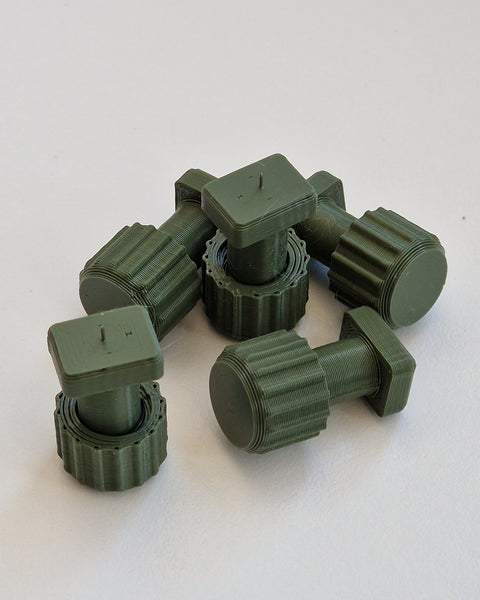
These drip caps are also excellent tools for distributing nutrients to the aerial roots via the sphagnum moss, and many choose to add liquid fertilizer to the SlowDrip caps. Over time, the presence of minerals and other components in the water will lead to build-up that will clog the tiny drip holes, an easy fix as you can use the little pin to clear the obstruction or add new clean holes. It can also be washed out with lukewarm water and mild soap to clear contaminants.
For a larger and more flexible watering container, we've made a one-size-fits-all Adjustable SlowDrip Cap which can fit the XL, XXL, and D-Shaped Line (again, may even be the right diameter for your DIY moss pole). This container holds more water than any of our other drip caps, and features a special valve that can be opened or closed by twisting the light blue tip, speeding up or slowing down the drip rate.
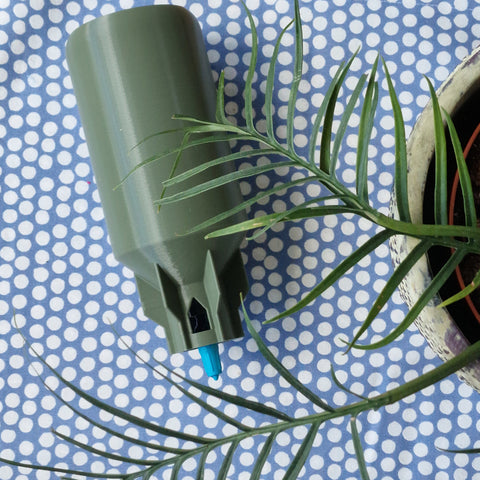
This container is also easy to clean, as the blue tip can be removed completely and washed to decalcify and remove any blockage.
Like with any watering solution that depends on transfer through a tiny hole, you will want to keep your drip caps quite full, as you require the pressure of gravity to overcome the surface tension of the water and allow the water to escape the container.
One day we may explore systems that leverage an external pressure to overcome the surface tension, but that is a topic for another day.
How to know when to water your moss pole?
Your sphagnum moss pole will tell you it’s time to water it when it changes colour. It will dry out (usually starting at the top), changing colour, and little light tips will appear.
While live sphagnum moss definitely prefers to stay moist, as then it can continue to grow and propagate, it will retain its most useful properties even after it has dried out a few times.



